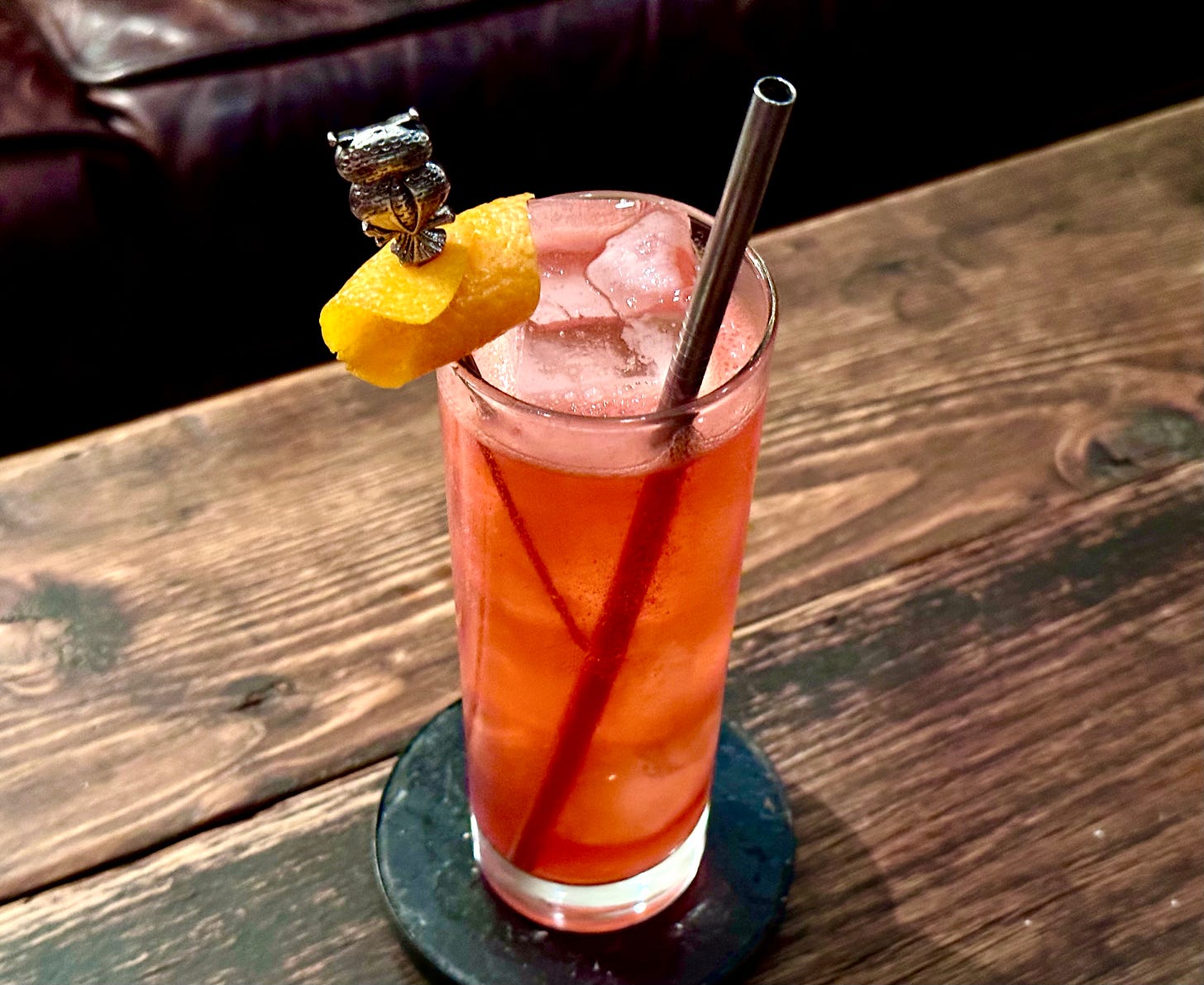The Existence of a Campari Collins Implies the Existence of a Cynar Collins
A lighter take on the bitter sour.
There aren’t many cocktails books with an entire section on the Collins. But The New York Times Essential Book of Cocktails has a chapter devoted to the drink and variations on the form.
Most are made with gin, like the Collins variations we made last week. That’s hardly surprising, since the Collins is fundamentally a gin drink.
But the final entry in the section intrigued me. It was a recipe for a Campari Collins, which is just what it sounds like: a Collins-style cocktail — basically a sour made long with the addition of sparkling water — made with a base of Campari.
Readers, I am here to tell you that not only is this drink dangerously delicious, it also implies the existence of many other similar Collins style cocktails — including, you may not be surprised to hear, a Collins made with Cynar.
I will never stop saying this because it never stops being true: Cynar! Put it in everything!
This week’s cocktails are obviously for fans of strange bitter drinks, and especially for fans of bitter sours. But I also believe — perhaps somewhat optimistically — that this week’s drinks are for people who don’t like Campari or Cynar or other bitter bottles.
When served in the Collins format, these liqueurs become lighter, brighter, less intense, and in some ways even more flavorful. The addition of sugar, citrus, seltzer and a hint of salt contains the bitterness of amari, making it more approachable.
If you already like Campari and Cynar, this class of bitter Collins cocktails is a must try. If you want to try to like Campari and Cynar, this set of cocktails is a pretty good place to start.
The Universal Collins Formula, Bitter Style
The Campari Collins recipe in the Times cocktail book, which credits the drink to Chris Harrington and Theresa Paopao of Momofuku, relies on an 8:3:3:16 ratio (Campari:lemon juice:syrup:seltzer) — but I’ve been making this with the same ratio I used for the Universal Collins last week. Similarly, I also use a sort of reverse Collins production method, pouring the seltzer over ice first and then shaking and straining the rest of the mix on top for better integration.



